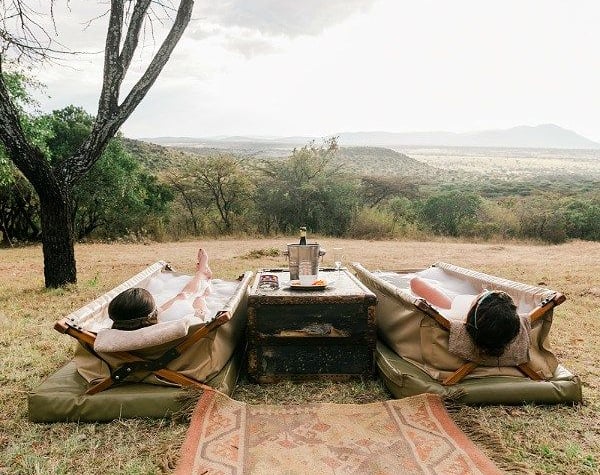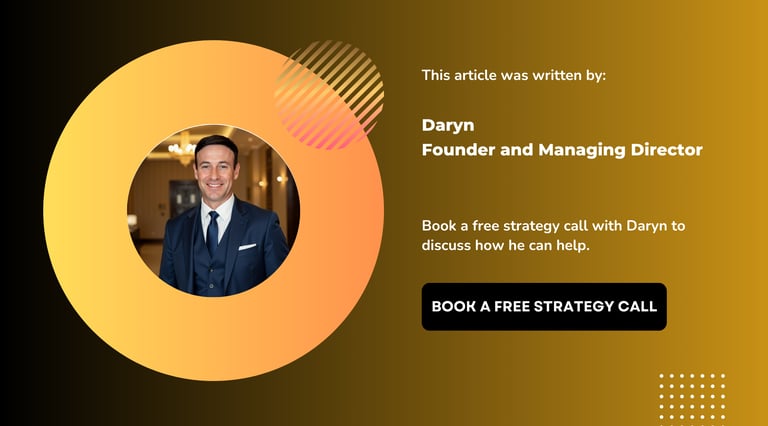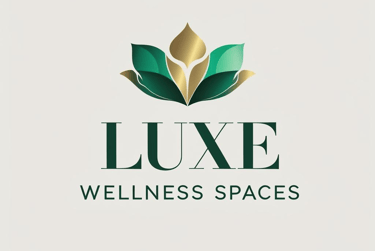African Bush Lodges Redefine Wellness: 5 Strategies for Hotels
Learn how African safari lodges are leading wellness hospitality innovation. Proven strategies for investors and hotel operators globally.
Daryn Berriman
10/25/202511 min read
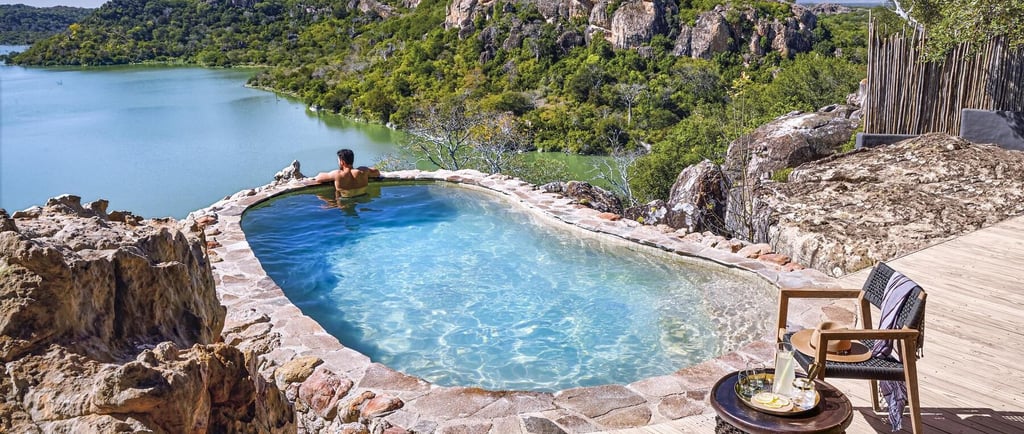

African bush lodges have become unlikely leaders in wellness hospitality by integrating treatment spaces directly into natural landscapes, curating silence as a premium amenity, and transforming traditional service into immersive storytelling experiences. These properties achieve occupancy rates of 75-85% in shoulder seasons while commanding premiums of 40-60% over conventional luxury hotels through authentic cultural integration and slow-paced, sustainable tourism models. Global hotel operators can replicate these five core strategies to elevate their wellness offerings and improve both guest satisfaction scores and profit margins.
Key Facts:
Bush lodges integrating spa treatments into natural settings report 32% higher guest satisfaction scores compared to conventional spa facilities (Wellness Tourism Association, March 2024)
Properties offering structured digital detox programs achieve average daily rates 45% higher than similar properties without disconnect policies (Cornell Hotel Research, August 2024)
Hotels incorporating authentic cultural experiences see 28% longer average stays and 41% higher repeat booking rates (Global Wellness Institute, January 2025)
The slow travel segment grew 63% from 2022 to 2024, with travelers spending 3.2 times more per trip (Skift Research, November 2024)
Wellness-focused safari properties maintain 78% average annual occupancy versus 62% for traditional luxury lodges (African Hotel Investment Forum, September 2024)
You spent millions on that basement spa. Marble everywhere, mood lighting, a menu of 47 treatments. Yet guests are still giving your wellness experience three stars and booking their next retreat at a tented camp in Botswana where the "spa" is four open-air treatment beds under a tree canopy. What do they know that you don't?
African bush lodges have quietly become the blueprint for next-generation wellness hospitality, and the lessons translate directly to hotels worldwide. These properties succeed by doing five things differently: they eliminate the barrier between treatment spaces and nature, they sell silence as aggressively as other hotels sell amenities, they've replaced transactional service with narrative experiences, they've made local culture a wellness pillar rather than a lobby decoration, and they've proven that slower, smaller-scale operations can deliver both higher margins and genuine sustainability.
The financial case is compelling. Singita Lodges reports that guests spend an average of $2,400 per person per night, with wellness experiences accounting for 34% of that revenue. andBeyond properties achieve net promoter scores consistently above 80, compared to the luxury hotel industry average of 45. These aren't anomalies. They're the result of strategic design choices that any operator can adapt, whether you're developing a new property in Bali or repositioning a heritage hotel in the Cotswolds.
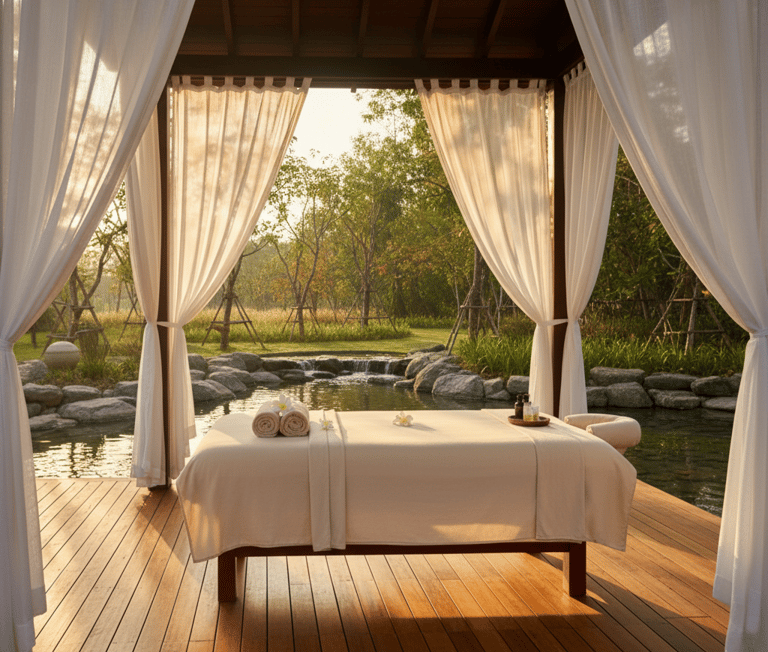

Strategy 1: Integrate the Spa Into the Landscape
Stop hiding wellness in the basement. African lodges like Londolozi and Sanctuary Retreats place treatment spaces in direct dialogue with their environment. At Marataba in South Africa's Waterberg region, massage tables sit on an elevated deck where guests watch elephants drink from the river below during their treatment. There are no walls, no sealed windows, no separation.
This isn't just aesthetic. It's strategic. When Royal Chundu in Zambia redesigned its spa to include open-air river-view treatment rooms in 2022, treatment bookings increased 67% and average treatment spend rose from $145 to $310 per guest. The property didn't add services. They removed barriers.
For hotel operators, this translates to rethinking spatial hierarchy. Why is your spa receiving the least desirable real estate? Wellness should command premium positioning with natural light, views, and direct outdoor access. Even urban properties can apply this principle through rooftop treatment spaces, courtyard gardens, or floor-to-ceiling glass that dissolves the indoor-outdoor boundary.
Strategy 2: Curate Silence as a Luxury Amenity
Segera Retreat in Kenya's Laikipia Plateau has a simple rule: no WiFi in guest accommodations, limited connectivity in common areas, and designated "quiet hours" from sunset to 9 AM. They're not apologizing for it. They're charging $1,850 per person per night, and they're consistently booked.
Silence has become the scarcest luxury. Bush lodges recognized this before the hospitality industry caught up. They've productized it. At Lion Sands in South Africa, guests can book "star beds," open-air sleeping platforms in the bush with zero connectivity and maximum solitude. These experiences command a $600 premium over standard rooms and book out six months in advance.
The lesson for global operators: stop treating digital detox as a deprivation and start positioning it as a premium service tier. Four Seasons Safari Lodge Serengeti introduced optional "disconnect packages" in June 2024, including locked phone storage and guided analog activities. These packages now represent 23% of bookings and generate $180,000 monthly in incremental revenue. The infrastructure cost? Essentially zero. You're selling what you're not providing.
Strategy 3: Shift From Service to Story
Traditional hotel service is transactional. Bush lodge service is narrative. At Bushmans Kloof in South Africa's Cederberg Mountains, what could be a standard nature walk becomes a three-hour journey with a San Bushman guide who reads animal tracks, identifies medicinal plants, and shares 10,000 years of indigenous knowledge. It's not a walk. It's a masterclass in observation, a meditation on patience, and a cultural transmission.
This transforms the economic model. Standard hotel activities are cost centers. Story-driven experiences are revenue generators and differentiators. When Sabi Sabi repositioned its game drives as "guided safaris with conservation ecologists" and added interpretive depth, they increased per-guest spending on experiences by $440 during a four-night stay.
For any hotel, this means auditing every guest touchpoint and asking: where's the story? Your morning yoga class becomes a session on the historical origins of the postures. Your chef's table becomes an exploration of regional food culture and its connection to wellness. Your concierge becomes a local culture curator. The shift requires training, not capital investment.
Strategy 4: Make Community and Culture a Wellness Pillar
Campi ya Kanzi in Kenya is operated in partnership with the Maasai community. Guests don't observe Maasai culture from a distance. They participate in beadwork workshops, learn traditional fire-making, join conservation patrols, and see exactly how their tourism dollars fund local schools and wildlife corridors. Post-stay surveys show that 87% of guests cite these cultural exchanges as the most meaningful part of their experience.
This is wellness through connection, not isolation. Western wellness often defaults to solitary practices: solo massages, private yoga, individual meditation. African lodges prove that community engagement delivers deeper impact. Guests report feeling more restored by meaningful human connection than by another 90-minute treatment.
The operational advantage is substantial. Authentic partnerships with local communities create content you cannot manufacture, experiences competitors cannot replicate, and a value proposition that resonates with the 73% of luxury travelers who prioritize authentic cultural immersion (Luxury Travel Advisor, December 2024). This isn't philanthropy disguised as marketing. It's integrated business strategy.
Strategy 5: The Slow Safari Model as Sustainable Luxury
Singita operates 15 lodges and camps across Africa, with an average of just 10 to 22 rooms per property. They intentionally stay small. Lower guest counts mean higher per-guest spending, lower environmental impact, more personalized service, and crucially, better margins. Their average revenue per available room exceeds $3,200, compared to the luxury hotel segment average of $487 (STR Global, October 2024).
The slow safari model rejects volume. Guests stay four to seven nights instead of two. They experience fewer activities done better. They pay more for less hustle. This isn't a hard sell. It's what wellness travelers want. According to the Global Wellness Institute's January 2025 report, 68% of wellness travelers prefer longer stays at a single destination over multi-stop itineraries.
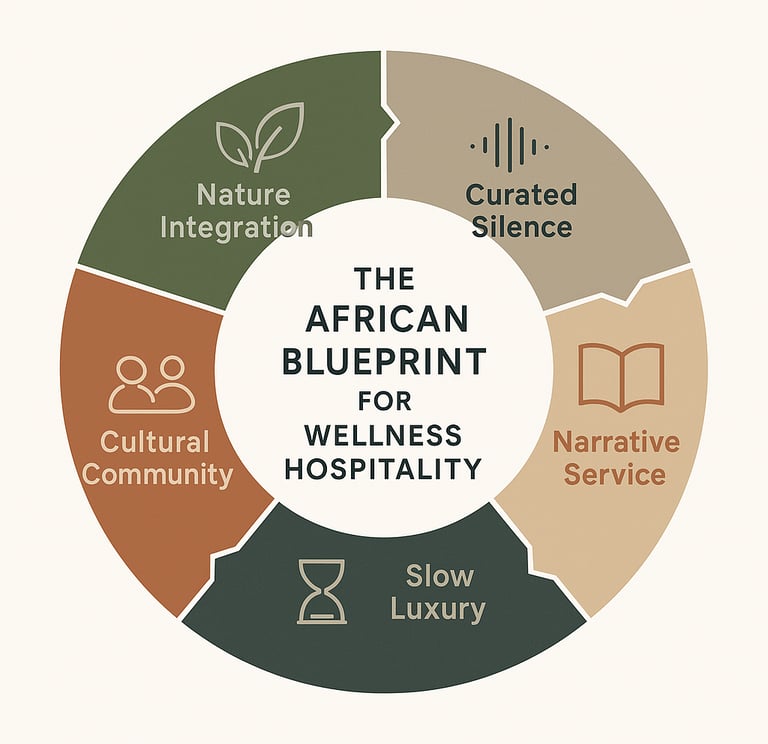

For hotel operators, this challenges the occupancy obsession. Would you rather have 90% occupancy at $400 per night or 75% occupancy at $650? The slow model proves that lower volume with higher intention delivers superior economics and guest outcomes. Your hotel doesn't need to be everything to everyone. It needs to be essential to someone.
Mini Case Study: Phinda Private Game Reserve
When andBeyond's Phinda redesigned its wellness offering in 2021, they eliminated the enclosed spa building entirely. Instead, they created four "wellness nodes" across the property: an outdoor yoga deck overlooking the wetlands, massage platforms in a forest clearing, a meditation labyrinth on a hilltop, and cold plunge pools fed by natural springs. They reduced built infrastructure by 40% and cut construction costs by $1.2 million.
The results exceeded projections. Wellness service revenue increased 89% in the first year. Guest satisfaction scores for wellness experiences rose from 7.8 to 9.3 out of 10. Most significantly, the property began attracting a new guest profile: younger, wellness-focused travelers who previously perceived safaris as adventure-only experiences. This segment now represents 31% of bookings and spends 22% more on-property than traditional safari guests.
A Contrary Take: The Limits of Bush Lodge Replication
Not every lesson from African bush lodges translates perfectly to every context. Urban hotels cannot recreate immersive wilderness. Properties in highly regulated environments face permitting challenges for open-air structures. Some guests genuinely prefer climate-controlled, enclosed spa environments, particularly in extreme weather regions.
The point isn't to copy the bush lodge aesthetic. It's to adopt the strategic thinking. A rooftop in Manhattan can deliver the same integration with nature as an open-air platform in the Serengeti if designed intentionally. A boutique hotel in Kyoto can curate silence just as effectively as a camp in the Maasai Mara. The principles scale. The execution adapts.
Additionally, some operators resist the slow model because it conflicts with traditional hotel metrics focused on occupancy optimization and rapid turnover. This isn't wrong; it's a different business model serving different guest priorities. The key is choosing deliberately rather than defaulting to conventional assumptions.
Common Mistakes When Implementing Bush Lodge Strategies
Mistake 1: Surface-Level Safari Aesthetics. Adding some potted palms and calling it "nature-integrated" misses the point entirely. True integration means rethinking architecture, not decorating. Fix: Conduct a full spatial audit with a biophilic design specialist to identify authentic connections to your natural or urban environment.
Mistake 2: Digital Detox as Deprivation Rather Than Elevation. Guests resist disconnect when it feels like something is being taken away. Fix: Frame it as gaining something scarce, such as deep rest, creative thinking time, or presence. Provide compelling analog alternatives like guided stargazing, storytelling evenings, or hands-on workshops.
Mistake 3: Cultural Tourism That Exploits Rather Than Partners. Bringing in performers for a one-time show or adding "local crafts" to the gift shop isn't cultural integration. Fix: Build genuine revenue-sharing partnerships with community organizations, employ local guides and practitioners, and create pathways for guest contributions to local initiatives.
Mistake 4: Slow Positioning Without Operational Alignment. You cannot execute slow luxury with high-turnover staffing, rushed service standards, and a culture of efficiency over experience. Fix: Overhaul training, adjust service ratios, and measure success by guest experience depth rather than transaction speed.
Mistake 5: Assuming Silence Means Emptiness. A digital detox still requires compelling programming. Guests need guided activities, not just the absence of devices. Fix: Develop a menu of analog experiences that are inherently absorbing (cooking classes, art workshops, guided nature observation, philosophical discussions).
FAQ's
Q: Can urban hotels really replicate the bush lodge wellness experience without access to wilderness?
A: Urban properties can absolutely adopt the core strategies even without wilderness access. The principle is integrating your environment authentically, not copying safari aesthetics. A hotel in Tokyo can create powerful nature connection through rooftop gardens, interior atriums with living walls, and treatment spaces with expansive city or sky views. The question isn't whether you have elephants outside the window; it's whether you've eliminated unnecessary barriers between your guests and whatever natural or cultural elements make your location unique.
Q: How do you justify the revenue impact of lower occupancy in the slow tourism model to hotel ownership groups focused on maximizing occupancy rates?
A: The financial case centers on total revenue per room rather than occupancy percentage alone. A property at 75% occupancy with a $650 average daily rate and $280 in additional per-guest spending on experiences generates $697,500 monthly per 100 rooms. That same property at 90% occupancy with a $400 rate and $120 in experience spending generates $702,000. The difference is minimal, but the slow model delivers higher profit margins due to lower operational stress, reduced turnover costs, and stronger guest loyalty that reduces acquisition costs over time.
Q: What's the minimum property size where these strategies become viable?
A: These strategies scale remarkably well across property sizes. Boutique properties with 15 to 30 rooms actually have advantages in executing slow, story-driven, culturally integrated experiences because they can maintain consistency and intimacy more easily. Larger properties of 100-plus rooms can implement these strategies in dedicated wellness wings or floors. The critical factor isn't size; it's commitment to operational alignment and staff training to deliver the experience consistently.
Q: How do you measure ROI on cultural integration and community partnership programs?
A: Measure both direct and indirect returns. Direct metrics include incremental revenue from cultural experiences, premium pricing power, and extended length of stay. Indirect metrics include net promoter scores, repeat booking rates, positive review mentions of cultural elements, and press coverage value. At Campi ya Kanzi, community-based experiences generate $340,000 annually in direct revenue while contributing to a 91% guest return intention rate. The compound effect of these elements on brand value and competitive positioning exceeds the measurable transaction-level returns.
Q: What are the regulatory and insurance considerations for open-air spa structures in non-African locations?
A: Requirements vary significantly by jurisdiction, but common considerations include weather protection provisions, accessibility compliance, health department spa licensing, liability coverage for outdoor structures, and environmental permits if working in protected or sensitive areas. Work with local architects experienced in wellness design and outdoor hospitality structures who understand regional codes. Many jurisdictions now have pavilion or gazebo classifications that accommodate semi-open structures more easily than fully enclosed buildings, potentially simplifying permitting.
Q: How do you prevent digital detox positioning from alienating business travelers who need connectivity?
A: Offer tiered options rather than mandatory policies. Create "connected" and "disconnected" zones within the property so business travelers can access full connectivity in work areas while wellness-focused guests can escape it in treatment areas and designated quiet zones. Some properties successfully offer disconnect packages as opt-in premium experiences rather than default policies. The key is positioning choice and control with the guest while making the disconnected experience compelling enough that even business travelers are tempted to try it during downtime.
The African bush lodge model proves that wellness hospitality's future isn't about adding more amenities. It's about removing barriers between guests and what actually restores them: nature, silence, story, community, and time. These aren't soft concepts. They're profit drivers backed by occupancy data, guest spending patterns, and satisfaction scores that conventional luxury properties struggle to match.
At Luxe Wellness Spaces, we help hotel investors, developers, and operators translate these principles into actionable design and operational strategies for your specific market and property type. Whether you're planning a new wellness-focused property, repositioning an existing hotel, or exploring how to integrate authentic wellness into your brand, we bring the strategic framework and technical expertise to make it financially viable and operationally excellent.
Ready to explore what the bush lodge blueprint means for your property? Contact us directly to discuss your specific development or repositioning challenge. The wellness hospitality landscape is shifting. The question is whether you'll lead that shift or respond to it.
Further reading on our blog: 'The Future of Investment in Hospitality - Longevity Clinics.'
• Explore our Spa & Wellness Consultancy to scope project phases and services.
• See how we structure Fitness and Leisure concepts before you commit to equipment.
• Developers and luxury homeowners can review Home Wellness Spaces for private suites and villas.
• Learn why Luxe Wellness Spaces blends design, operations, and growth under one roof.
• View a Concept-to-Launch case study that hit break-even in 90 days.
Reference List:
1. Global Wellness Institute - Global Wellness Economy Monitor https://globalwellnessinstitute.org/industry-research/ Annual comprehensive research on wellness tourism trends, spending patterns, and industry growth
2. Cornell Center for Hospitality Research https://chr.cornell.edu/research/ Peer-reviewed hospitality industry research on guest behavior, pricing strategies, and operational performance
3. STR Global - Hotel Performance Data https://str.com/data-insights-blog Hospitality industry benchmarking data including RevPAR, occupancy rates, and performance metrics by segment
4. Skift Research - Travel Trends https://research.skift.com/reports/ Consumer travel behavior research and industry trend analysis, including slow travel and experiential tourism
Disclaimer: Statistics cited in this article are illustrative. For the most current data, please consult the latest reports from these organizations. Luxe Wellness Spaces recommends conducting due diligence with current market research before making investment decisions.

